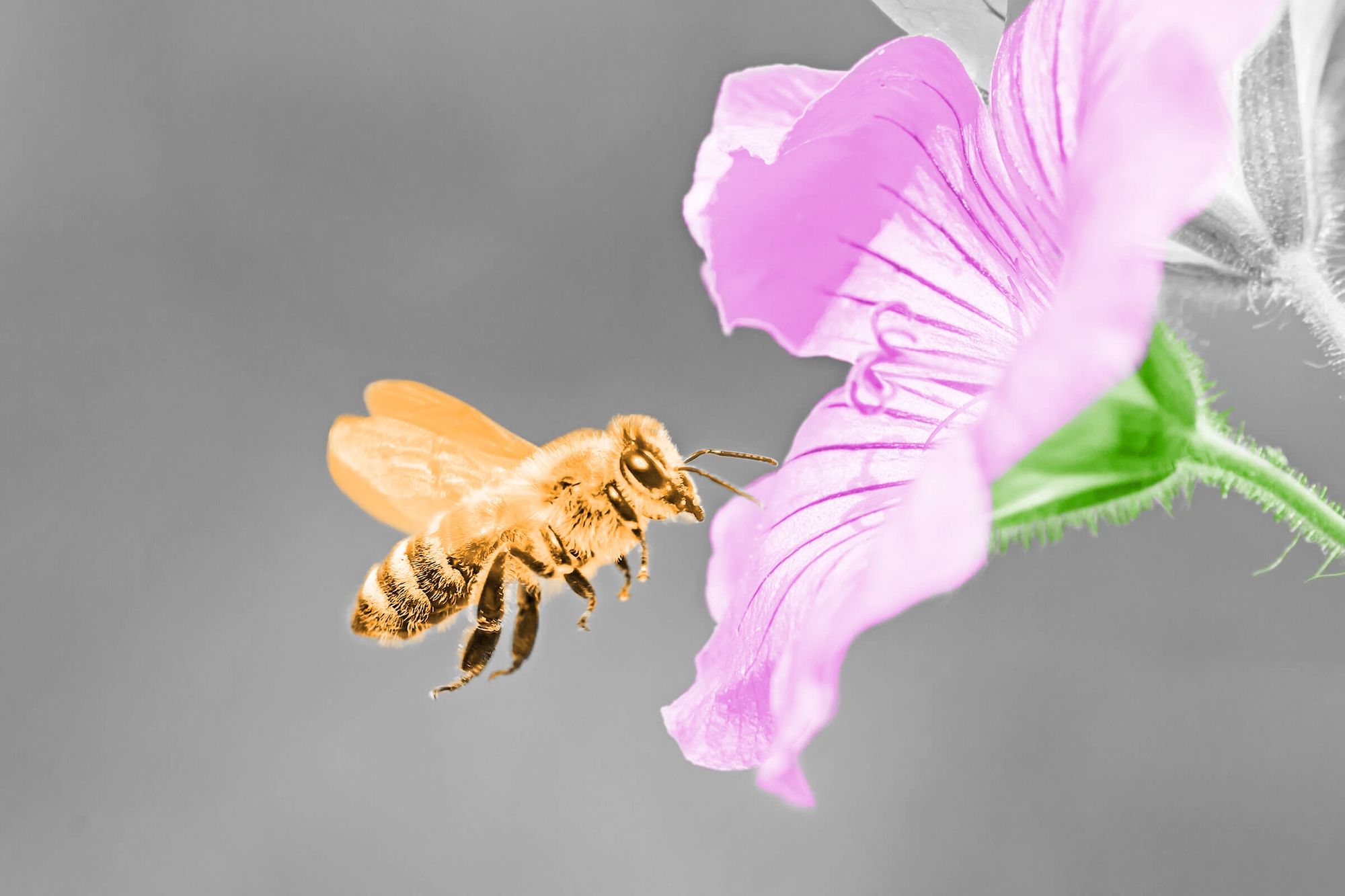

The animal kingdom is full of amazing creatures capable of feats far beyond human abilities. These seven examples highlight a mere fraction of the wonders found in the forests, plains, jungles, and oceans of the world, from the almost unbelievable abilities of space-faring microorganisms to the surprising agility of some of the largest land animals on the planet.
Honeybees Use Democracy to Establish New Hives

Humans aren’t the only ones who use representative decision-making to forge a path forward for the entire collective. When honeybees have outgrown their hive, they send out a few hundred scouts (selected by the queen) to find a new location, preferably a south-facing knothole several yards off the ground. As these bees find suitable locations, they report back to the queen by performing what’s called a “waggle dance,” which essentially gives directions to the site. From here, the honeybees begin to form coalitions, as uncommitted bees join the cause of one side or the other. Once 15 or so bees have flown to one location, the scouts signal to the hive that it’s time to move. This decentralized, collective decision-making consistently delivers excellent results.
Tardigrades, Also Known as Water Bears, Can Survive in Space

Tardigrades (also known as water bears or moss piglets) are microscopic organisms that can be found almost anywhere on Earth, from the bottom of the ocean to Antarctica’s McMurdo Valleys. Amazingly, they can pause their biological clocks in a desiccated state. Once in this state, tardigrades can survive just about anything, including immense pressures, heat up to 300 degrees Fahrenheit, and even cold approaching absolute zero. In their desiccated state, tardigrades also produce an extreme amount of antioxidants, which makes them resistant to space radiation. Combine this with their ability to withstand the cold vacuum of space, and these water bears far outstrip humans in their ability to travel beyond Earth’s orbit.
One Species of Jellyfish Is Biologically Immortal

Death is a part of life — unless you’re an immortal jellyfish, that is. Known scientifically as Turritopsis dohrnii, this jellyfish has the ability to essentially regenerate to a previous life stage. When born, the jellyfish grows into a larval stage called a planula, which eventually attaches itself to a surface. After then forming into a tubelike structure called a polyp, it eventually buds and breaks away into a juvenile jellyfish. Unlike other jellyfish, when Turritopsis dohrnii become damaged for whatever reason, they revert back into a polyp and repeat the developmental process. These jellyfish aren’t true immortals, since they’re just as susceptible to predators as anyone else, but this amazing regenerative ability means the immortal jellyfish can never die from old age.
A Dung Beetle Can Pull 1,141 Times Its Weight

A dung beetle known as the taurus scarab (Onthophagus taurus) might not seem like the most dignified of creatures, seeing as it has a predilection for elephant feces. But don’t let its strange appetites fool you — this beetle is one of the strongest animals in the world. In 2010, scientists discovered that the insect could pull 1,141 times its weight, which is the equivalent of a 200-pound person single-handedly pulling a blue whale. Granted, not all taurus scarabs can pull that weight; only horned males given a healthy diet could summon such monstrous strength.
Octopuses Can Fit in an Inch-Wide Hole

Many animals have a knack for compression (rodents being particularly gifted), but none compare to octopuses, who can fit through inch-wide holes with ease. Octopuses are a kind of cephalopod, which in Greek means “head-foot” (because their heads are essentially attached to their “feet,” or tentacles), along with squid, cuttlefish, and nautilus. These creatures have a big advantage over other animals when it comes to squeezing through tight nooks and crannies, because they have no bones whatsoever. This means that octopuses can fit through most holes as long as the holes are bigger than the only hard part on their body — their beak. In 2010, to show off the cephalopod’s amazing body-contorting abilities, National Geographic filmed a 600-pound big blue octopus (Octopus cyanea) as it passed through a plexiglass hole the size of a quarter.
Hippos Can Outrun Humans

The second-largest land animals after elephants, by some counts, with males weighing up to 9,920 pounds, hippopotamuses are notoriously aggressive and dangerous to humans. Luckily, humans can easily outrun these lumbering creatures on land, right? Well, no. When galloping, hippos can reach speeds of 19 miles per hour, whereas the average running speed of a human male is around 8 miles per hour. So if you ever come across a hippo in the wild, a minimum safe distance may be much farther away than you might think.
Male Seahorses Give Birth

Unlike nearly any other species in the animal kingdom, male seahorses are the ones responsible for the gestation and birth of baby seahorses, known adorably as “fry.” After a seahorse egg is fertilized, it is transferred to the male’s brood pouch; this embryonic handoff makes the baby-making process more efficient, as females can then immediately create a new batch of eggs. Once the fry are born following a 14- to 28-day gestation period, the male seahorse can be impregnated once again. Such mating efficiency is extremely helpful, since seahorse fry are incredibly vulnerable during the first few weeks of life and many won’t survive the experience, meaning that it’s up to the adults to make as many of them as possible.
